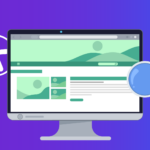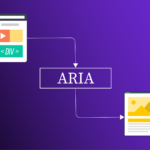Did you know that despite the digital revolution, a significant portion of electronic resources in libraries remain inaccessible to those with disabilities? Almost 8 out of 10 public university academic libraries reported accessibility errors as one of the major findings. This statistic isn’t just alarming – it highlights a critical gap in our libraries’ mission to provide equal access to information.
But it doesn’t stop at purchasing accessible materials. Librarians across the globe are stepping up, becoming advocates and hands-on technicians in the quest to make all library content accessible. This blog explores how librarians are going beyond the basics, pushing for systemic change, and remediating content to ensure that no one is left behind in the pursuit of knowledge.
The Role of Libraries
Libraries have always been pillars of knowledge, serving as gateways to information for everyone, regardless of background or ability. They are places where learning knows no boundaries, and inclusivity is more than a buzzword – it’s a mandate. However, as content increasingly migrates to digital formats, ensuring this information is accessible to people with disabilities has become a pressing challenge.
Legal and Ethical Responsibilities
Libraries operate under both legal obligations and a deep-rooted ethical commitment to provide accessible content. Laws such as the Americans with Disabilities Act (ADA) and Section 508 of the Rehabilitation Act require that public institutions, including libraries, ensure equal access to information for people with disabilities. But it’s not just about ticking boxes for compliance – librarians are driven by the core mission of inclusivity, striving to create environments where everyone, including those with visual, auditory, or cognitive impairments, can thrive.
Advocacy for Accessible Content from Publishers
Librarians as Advocates
Librarians are no longer just purchasers of content – they’re advocates for accessibility. Frustrated by the limited availability of accessible materials, many librarians are pushing publishers to do better. From attending industry conferences to engaging in direct conversations with publishing houses, librarians are championing the need for born-accessible content, which is designed with accessibility in mind from the outset.
Challenges Faced
The road to accessible content isn’t without obstacles. Many publishers cite increased costs and technical difficulties as reasons for dragging their feet. In some cases, there’s a simple lack of awareness about the importance of accessibility or how to implement it effectively. Despite these challenges, librarians are persistent, knowing that every victory in accessible publishing opens doors for countless users.
Success Stories
There are shining examples of librarian advocacy making an impact. For instance, the Toronto Public Library successfully lobbied several major publishers to adopt accessible e-book formats. Another example is the Accessible Books Consortium, led by librarians and industry partners, which has increased the availability of accessible digital books globally. These wins show that persistence pays off, and the industry is starting to listen.
The Ongoing Need for Creating Accessible Content
Limitations of Purchased Content
While many libraries are investing in accessible materials, purchasing accessible content alone isn’t a silver bullet. Updates, supplementary materials, and legacy content often fall through the cracks. For example, a newly purchased e-book might be accessible, but what about the supplementary PDF study guide that accompanies it? Or the archived articles in a digital database? These pieces of content also need to be remediated to ensure full accessibility.
Volume and Complexity Challenges
- Large Volumes
Libraries manage vast collections, sometimes spanning millions of items. The sheer volume of content can be overwhelming, and tackling it requires a strategic approach. Librarians often have to prioritize which materials to remediate first based on demand and impact.
- Diverse Formats and Complexities
Digital content comes in many forms – audio, video, interactive media, datasets, and more. Each format presents its own accessibility challenges. Videos need captions and audio descriptions, while interactive content (like quizzes or simulations) requires careful design to ensure it’s navigable by users who rely on screen readers or keyboard-only navigation. Even technical documents, like research papers or datasets, need to be formatted with accessibility in mind, ensuring that users with disabilities can engage with the data.
Equipping Librarians for Remediation Projects
Training and Skills Development
Librarians are taking a hands-on approach by learning how to remediate content themselves. From online courses to workshops, librarians are gaining skills in digital accessibility, including how to create and convert documents into accessible formats like tagged PDFs and EPUBs.
Tools and Technologies
There’s a growing toolkit available for librarians undertaking remediation projects. Tools like Adobe Acrobat Pro for tagging PDFs, DAISY (Digital Accessible Information SYstem) for accessible audiobooks, and NVDA (NonVisual Desktop Access) for screen reader testing are becoming essential parts of the librarian’s toolkit.
And for libraries looking to streamline their remediation projects, platforms like Documenta11y offer a 24/7 self-serve solution where librarians can seamlessly drop files for remediation. It’s an efficient way to handle large volumes of content that need to be made accessible, ensuring both speed and compliance with accessibility standards like WCAG 2.1. Documenta11y handles the heavy lifting, allowing librarians to focus on other critical tasks in their accessibility efforts.
Collaboration and Community
Librarians understand the power of community. Through forums like the American Library Association (ALA) and International Federation of Library Associations (IFLA), they’re sharing best practices, troubleshooting challenges, and pooling resources to tackle accessibility issues collectively. Many librarians also collaborate with local disability organizations and accessibility experts to ensure their efforts are as effective as possible.
Conclusion
Accessibility in libraries isn’t just a legal requirement – it’s a moral imperativeand the work is far from over. To truly achieve accessibility for all, libraries and publishers need to continue working together, with librarians playing a central role in this collaboration. Publishers must prioritize creating born-accessible content, while librarians must continue their advocacy, remediation efforts, and training to ensure that no one is left behind.
In the coming years, we hope to see more libraries adopting comprehensive accessibility plans, more publishers creating born-accessible content, and more users benefiting from these collective efforts. Accessibility isn’t a checkbox – it’s a journey. And librarians are leading the way toward a future where everyone has equal access to the wealth of knowledge contained in our libraries.

 5 Key Things to Look for When Choosing a PDF Accessibility Partner
5 Key Things to Look for When Choosing a PDF Accessibility Partner How Semantic Structure and Regions Improve Digital Accessibility
How Semantic Structure and Regions Improve Digital Accessibility Less ARIA, More Accessibility: Documenta11y's Guide to Cleaner Web Content
Less ARIA, More Accessibility: Documenta11y's Guide to Cleaner Web Content

